#he puts the Al is Salwar kameez
Explore tagged Tumblr posts
Text
You know what, fuck it. Desi’s your Alabaster:
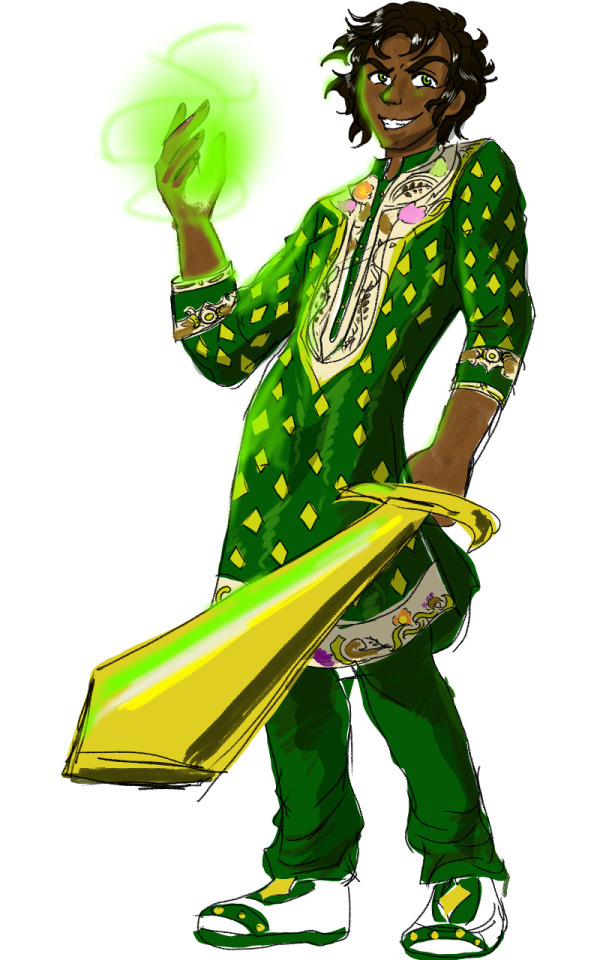
#I originally wanted to draw canon Al in Indian clothes like velinxi did with the hanfu drawings#but then I went full on Desi Alabaster#he puts the Al is Salwar kameez#<— dad joke for the win#also he still has freckles it’s just hard to see#son of magic#alabaster c torrington#he looks Good#alabaster torrington#pjo#percyjackson#Percy Jackson fanart#hoo#heroes of olympus
92 notes
·
View notes
Note
Hello! I saw that matchups were open and thought I'd send in a request for Twisted Wonderland.
Appearance-wise I am a 165 cm tall, average build, Bangladeshi woman (She/her but also cool with they/them). I have wavy black hair that just reaches below my shoulders and I usually dress in South Asian attire, usually salwar-kameez plus a hijab. I also wear glasses. I don't really feel comfortable going out without them 😅
My MBTI and enneagram: INTJ 5w4
Star sign: Sagittarius sun, Virgo moon and rising (I act more like a Virgo, allegedly)
Sexuality: demiromantic asexual (demisexual?)
Personality traits: Calm, collected, polite, quiet, shy (but that can easily be mistaken for being aloof or done with everyone's shit (they aren't entirely wrong about the latter) (someone told me I radiate black cat energy), not very facially expressive (I'm the most emotional emotionless person I know. I do feel things more deeply than people give me credit for), a good listener, hardworking (I often bite off more than I can chew and end up burnt out), intelligent (especially with numbers. RIP impostor syndrome + gifted kid burnout syndrome. As much as I love my major, electrical engineering is kicking my ass). I am also the oldest of three sisters, so I'm good at handling kids (I'm also expected to be the perfect daughter, so... yea). Someone also told me I'm wise, but all that wisdom came from all the books I read + watching Avatar: The Last Airbender lmao. The same person also said my presence was therapeutic (paraphrasing, of course. Also, this is alleged)
Hobbies: Making art, making jewelry, reading, writing, animating (I'm relatively new to animation. I don't know what I'm doing most of the time, but I'm still having fun), basically anything creative. I especially like to draw and paint things that radiate a sense of comfort, nostalgia, and serenity. Someone also told me that my artworks also hold a sort of innocence in the composition of the shapes, colours, and overall vibe of what I draw/paint. I also make jewelry from time to time
Likes: Classical music, lofi hip-hop, indie rpgs (Yume Nikki and Off have me in a chokehold, though not as tight as Obey Me, Court of Darkness, and Twisted Wonderland), tea, creative outlets. I also like to learn psychology
Dislikes: Cruelty, anyone who would dare to threaten my family or friends, loud noises, red meat (The texture is too much for me to handle), bright lights. I also dislike strong smelling things and being in crowded, noisy and bright environments for prolonged periods of time
What qualities do you look for in a partner? It may not look like it on the surface, but I'm a huge softie, I'd like anyone who I can feel safe talking to. They don't need to be perfect, I just need them to put effort into helping me with my emotional needs. I already do that a lot with others, so I'd like it if they turn the tables on me. I also would not tolerate it if my partner belittles me or if they're just mean or rude for no apparent reason.
My love languages include making art for them and spending quality time
How do you want to receive affection? As I stated before, I would like them to put effort into helping me with my emotional needs. I already do that a lot with others, so I'd like it if they turn the tables on me. I would also like physical touch and words of affirmation, but I can't guarantee I'll know how to react to that at first 🥲. It's gonna take some time for me to get used to it
I hope this is enough information. Thanks in advance if you choose to write this
I match you with...
KALIM AL ASIM
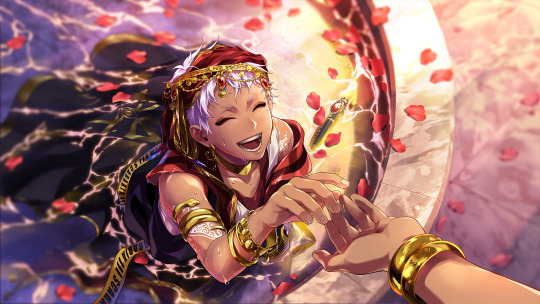
When you spoke about being an older sibling, it immediately reminded me of Kalim, and eventually I thought he might work!
Kalim, in all honesty, needs to work on how he handles himself around more reserved people. However, I think that the way you described your ideal partner lead me to think that Kalim was the best option.
Kalim is kind, generous, and is always looking out for the people he loves (even if he can be a tad dense at times.)
Kalim might be rather... erm... how can I say this in a polite way. stupid? Stupid in an endearing way. He'd always find time to make you happy and attend to your needs, however. He often says that teamwork is a valuable thing, and that's even truer in a relationship.
Despite often being unaware of the people around him, I think that after Jamil, Kalim is much more patient when it comes to listening to others, and is better at pulling his own weight. So, Kalim makes an effort to better make you comfortable since he knows your introverted nature can contrast with his own more extroverted one.
Kalim would always make time for you, ask your preferences for things, and generally try to make you as happy as possible. Kalim loves to have fun, and he has the most fun when he's with the people he loves, and that's you!
Receiving personally made gifts from you would make him incredibly happy, and to him they would be worth more than all of the treasures his family has.
Oftentimes, Kalim can treat you like a younger sibling moreso than a romantic partner, however, it's because he loves you and doesn't entirely get romance.
Speaking of younger siblings, he can relate to you by being an older sibling himself, and he's happy to introduce you to his many, MANY, younger brothers and sisters.
Now onto the part that made me unsure about Kalim for you. Kalim is VERY extroverted. He throws large parties and banquets quite often, and leaves Jamil to bear the weight of a lot of it. I assume that the stimuli from these events would be.. difficult to deal with for you, and Kalim would very much want you to go, however if you tell him, he'll understand how you feel (even if he's sad about it.) However, if you think of Kalim like the extrovert who adopted an introvert (you) it's much more endearing.
Kalim does anything he can to see you happy, feeling at peace when he sees you able to laugh and smile.
Thank you for requesting a matchup! Sorry if it isn't to your liking!!
Other character(s) I considered: Silver, Lilia.
#disney twst#twisted wonderland#twst#twst x reader#twst matchup#kalim al asim#twst kalim#twisted wonderland kalim#kalim x reader
8 notes
·
View notes
Text
Mehndi is the standard art of henna painting in India and the...
youtube
Mehndi is the standard art of henna painting in India and the Middle East. You might see it composed as mehandi, mehendi, mendhi, henna, al-henna, and a myriad other names and spellings. In current times, United States henna artists have actually come to denote the art with the term “Henna Body Art.” All of these words describe the very same ageless art kind, body painting for festive occasions. However you spell it, mehndi is pronounced meh-hen-di (with a soft, oral d sound like “thee”). I focus on understanding conceptions of henna in India, where it has been utilized since the 12th century. Many historic files detail earlier use; for example, it is the Arabic Muslims who brought henna to India, where it has blossomed into its own distinct art design. In Indian mehndi, a person applies styles generally to a lady’s hands and feet. For especially auspicious celebrations, men apply mehndi as well. The most auspicious occasion necessitating mehndi art work is the Indian wedding, where both bride and bridegroom use henna, along with numerous members of the bridal party. Henna on any occasion signifies fertility. At the wedding, henna artwork additionally symbolizes the love between husband and wife, and the stain’s long-lasting nature signifies the long-lasting nature of their love. Mehndi came into use because of its cooling healing impact in a hot environment, and, in India, it was likewise a way for a couple to be familiar with one another before an arranged marital relationship. A variety of customs underlie the use of mehndi, including wedding games and legends. For example, the groom’s name is normally written somewhere within the bride’s mehndi; if he can not discover his name within the complex design, the bride-to-be is stated to have the control in the marital relationship. Also, a dark mehndi design for both groom and bride represents that the two will have a strong relationship. Within the past couple of years, mehndi has ended up being popularized in the West by musicians and Hollywood characters alike, and is now a quickly increasing trend among females and males in world culture.
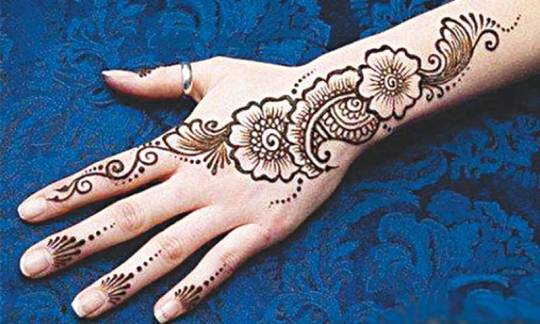
Translating the word “henna” actually indicates “to end up being queen.” The Indian name “mehndi” designates the procedure, the dye, and the stain of mehndi. To make the color, henna (mehndi) leaves are dried and finely ground. The powder that results is filtered two or more times through a fine nylon cloth. This process results in removing the coarse fibers from the powder, making what is left finer and much easier to use. The artist then blends this great powder with an oil (such as eucalyptus, nilgiri, or mehndi oil) and other liquids (lemon, water, or tea), making a thick paste. This paste is applied to the user’s hand in various designs, which can range from large, thick patterns to Moroccan geometric patterns to traditional Indian paisleys and lace-like drawings. All relies on the ability of the artist and the style of styles used. An option of lemon juice and sugar is then applied to the drying mehndi to allow it to stay stuck to the skin and to improve the passing away procedure. Mehndi is yet another standard yet exciting pre wedding. In Indian wedding events, a lot of focus is given on customs and rituals and the very same is shown in the Mehndi event prior to marital relationship. Mehendi ceremony has actually become such an essential part of the wedding ceremony that it can not be thought of without it. Furthermore, Mehndi is one of the sixteen accessories of the bride and her appeal is insufficient without it. Mehndi ceremony generally takes place just before marital relationship. According to the routine, the bride does not get out of your house after this event. latest mehndi ceremony is basically arranged by the household of the bride and is generally a personal affair which happens in the presence of good friends, family members and family members. However, the scale of the event depends upon specific choice. Some individuals commemorate it with excellent pomp and show. Mehndi is among the oldest forms of body art conceived by guy. The Hindi and Arabic word Mehendi is originated from a Sanskrit word ‘mendhika’ which referred to the henna plant itself. Recommendation to uses of henna can be traced back to the Bronze ages. In the bible, henna is referred to a Camphire. In and around the Indian subcontinent, henna has actually been utilized as a cosmetic even before Vedic ages. India is thought about as the source from where the body art customs with henna infect different parts of the world like Egypt, Asia Minor and the Middle East. Recommendations of henna throughout the mummification procedure of Pharaohs in addition to anecdotes of the well-known queen Cleopatra using henna to paint her body are widely known in history. Prophet Muhammad is understood to utilize henna paste to color his graying beard and was known to promote use of henna to others too. Use of henna is considered exceptionally auspicious in numerous traditions all over the world, particularly within Hindus, who would consider Mehndi part of the popular 16 adornments or Solah Shringaar. Henna (Botanical name: Lawsonia inermis) is a small shrub-like plant, discovered in tropical climates of Indian sub-continent, Malaysia, Africa, Middle Eastern nations. The leaves and branches produce a red-orange dye known as Lawsone that is responsible for imparting the characteristic color when bound with protein particles of the upper skin layer. The plant is commercially cultivated in Rajasthan, Punjab, Gujarat and parts of Madhya Pradesh. Traditionally, the Mehndi paste is made from dried powdered henna leaves. The leaves are dried in sun, ground and sieved to obtain a great mossy green powder, which is then integrated with water, lemon juice, drops of eucalyptus oil, and blended till a smooth paste is gotten. The paste is soaked overnight for maximum infusion and after that put inside a plastic cone. Smaller sized cones are preferred as it manages easier application.
The ideas of the cones are cut according to the preferred density of the lines required. The cones are squeezed gently to guarantee smooth, constant flow of Mehndi. Application is usually started from lower arms, gradually moving down the hand, ending in the fingertips. Gone are the days when particular aunties and sis were in need around the neighborhood for their proficiency in Mehndi designs. Now Mehndi event centers around expert Mehendi artist who focuses on the current trends in henna art. Standard Indian designs consist of peacock themes, flower styles, bride/groom reproductions and other components that cover every inch of the hand, forearms, feet and calves. The fingertips are normally covered in thick layers of henna paste. The concept is to decorate the bride’s body in replica of pricey Jewelry. For those who are minimalists, they can choose Arabic designs where the Mehndi concepts are normally applied to one side of the hand and feet and do not extend to lower arms or calves. Floral and paisley themes dominate this design and the styles are generally curvy with lots of focus on vines. Indo-Arabic design of Mehndi fuses these 2 design trends into an elegant, creative genre. Newest trends in bridal henna styles is incorporation of colors in between henna themes, addition of stones and blings, addition of flashes or metal dusts. Geometric patterns and white henna styles are also in vogue today. The henna requires to be continued for a minimum of 4 hours for deep and uniform color. The longer the paste is kept, the deeper will be the color. The color really magnifies depending on one’s body heat, so the henna-painted body parts can be covered in plastic wraps or foils to seal in the body heat. A mixture of lemon juice and sugar should be applied on the styles with a brush or light fabric at 1 hour periods so that the dried Mehndi does not fall off and sits tight making sure much better color. Another method to ensure better color advancement is to dry roast some cloves on a tawa and letting the hands absorb the smoke. The Mehendi must never be gotten rid of by water after it has actually dried and ought to be done by just rubbing the hands together as the dried bits come off easily. The Mehendi Ceremony normally happens the day before the wedding, in the early morning. The bride and the groom’s household observe this routine independently at their own homes. It is generally a females centric event with the men of the household typically not getting involved. The attire preferred for the ceremony are simple, in light colors, nothing too flashy. The venues are decked up with flowers and colorful drapes. The bride-to-be wears a light yellow or light green colored Lehenga or Salwar Kameez with short sleeves ideally and the groom wears Kurta Pajama also in light colors. It is elective for the groom to wear Mehendi, however a bit is used on his hands and feet in simple dots or little designs. The ceremony likewise involves application of oil on the groom’s hair. The henna for the bride’s event needs to show up from the groom’s side together with some other presents like fruits, dry fruits and sweets. Women of the house put together and the Mehndi is either used by among the bride-to-be’s relative or nowadays by professional Mehendi artists. Designs are more elaborate and depending on what the bride-to-be chooses, the henna is applied on the front and back of her palm, lower arm, till above the elbows, and on the feet till below the knee. Senior ladies sing standard Mehendi songs with dholaks and other musical instruments. Ladies family members of the bride also get simple mehndi applied to their hands, although the designs are not as sophisticated as the bridal Mehendi.
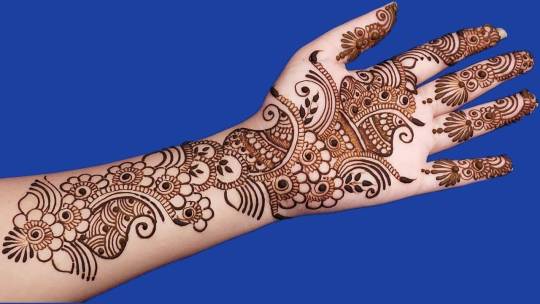
The Mehendi ceremony contains within itself a host of conventional beliefs that are handed down the generations. Traditionally, someplace within the intricate bridal Mehendi, the groom’s initial is included. In post marriage ceremonies, the groom needs to look and discover it out. This helps with a nice ice-breaker for the recently wedded couple specifically in case of an organized marital relationship. It is also stated that the darker the color of the Mehendi, the more love the bride will get at her in-laws and particularly from her other half. The durability of the color of Mehendi has special significance also. In older days when set up marital relationships were primary, the bride-to-be maintaining her Mehendi while visiting her parents’ house after the wedding indicated her mom that the in-laws were considerate and caring.
Use of Mehendi in a pre-wedding ritual is not just cosmetic however has deep underlying scientific factors behind it. Henna is understood for its cooling properties and is expected to soothe the bride’s nerves when applied to her hands and feet. Indian wedding events consist of a host of pre and post wedding event rituals that extend the happy event through days before and after the real wedding day. These colorful occasions bring the whole household together, even from far off locations. The immediate and extended families, buddies and neighbors get together to commemorate the union through various reliable routines throughout a span of several days. The Mehendi Ceremony is one such occasion that is an important part of the wedding event events. latest mehndi Event typically refers to application of a henna paste in elaborate detailed designs on the bride’s hands and feet. A profoundly vibrant event, with lots of singing and dance performances involved, the Mehendi event formally begins the wedding festivities in full equipment.
This ritual is not only part of Hindu wedding events in Northern and Eastern India but likewise a part of the wedding rituals among Indian Muslims. The ceremony is observed in nations adjoining India like Pakistan and Nepal, as well as in several Arab countries in the Middle East. Although, the routine was predominantly observed in parts of northern India, Rajasthan, Gujarat, Uttar Pradesh, Bihar, Madhya Pradesh and Punjab, the pattern has gained appeal all over India. Increasingly more cultures are accepting the idea of Mehendi Event as a pre-wedding routine mainly due to the aesthetics involved. The ceremony has actually become a sign of magnificence, fun and celebrations, and reason for some major pre-wedding girl bonding. Mehndi (or Hina) is the application of henna (Hindustani: हेना- حنا- urdu) as a short-term type of skin decor, most popular in South Asia, the Middle East, North Africa, and Somaliland, along with migrant communities from these locations. It is generally used for events and unique events, particularly weddings. Henna designs are usually made use of the hands and feet, where the color will be darkest since the skin includes greater levels of keratin. The leaves of the henna plant consist of a red-orange color particle, lawsone, which has an affinity for bonding with protein, and has been utilized to color skin, hair, fingernails, leather, silk, and wool. Henna leaves are usually dried and ground into a powder, which is mixed into a paste and applied using a range of strategies. The henna pasted is generally left on the skin for eight hours; after it is removed, the pattern continues to darken for approximately 3 days. The word “henna” originates from the Arabic name Hina for Lawsonia inermis. In the Bible’s Tune of Tunes and Tune of Solomon, henna is referred to as Camphire. In the Indian subcontinent, there are lots of alternative words such as Mehndi in North India, Pakistan, and Bangladesh. In Arabic-speaking nations in North Africa and the Middle East the Arabic word is “hina.” In Telugu (India, Malaysia, U.S.), it is referred to as “Gorintaaku.” In Tamil (South India, Singapore, Malaysia, Sri Lanka) it is called “Marudhaani” and is used as ground fresh leaves rather than as dried powder. It is used in various festivals and celebrations and utilized by ladies and children. It is left on overnight and will last one month or more depending on the plant and how well it was ground and the length of time it is left on. The various words for henna in ancient languages suggest that henna may have had more than one point of origin. It is understood that henna has remained in usage as a cosmetic, along with for its expected healing homes, for a minimum of 5,000 years, but a long history of migration and cultural interaction has actually made it tough to identify with absolute certainty where the custom started. Some scholars claim that the earliest paperworks of henna usage are found in ancient Indian texts and images, indicating that mehndi as an art-form may have come from ancient India. Others declare that the practice of ornamenting the body with henna was taken to India by the Moguls in the twelfth century C.E., centuries after it had been in usage in the Middle East and North Africa. Another theory is that the custom of easy mehndi originated in North Africa and the Middle Eastern nations during ancient times. Henna is likewise understood to have been used in ancient Egypt, to stain the fingers and toes of the Pharaohs prior to mummification. Another possibility is that the similar use of henna for skin decor arose independently and possibly at the same time in these regions.
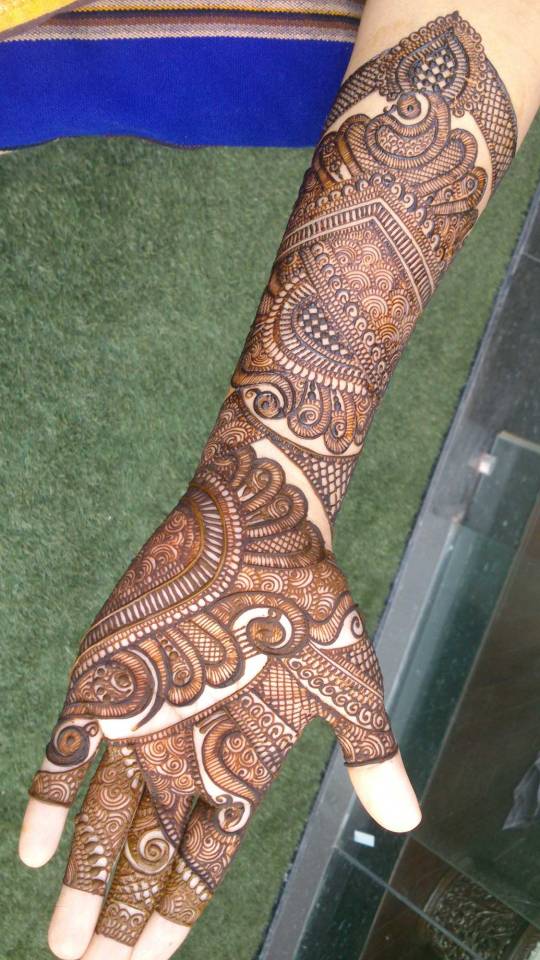
It is theorized that dots of henna were first applied to the palms of the hands as a means of cooling off the body. Early users of henna started to add lines and other shapes to the single dot on the palm, ultimately developing the fancy styles used today. Henna has actually been used to adorn girls’s bodies as part of social and holiday celebrations because the late Bronze Age in the eastern Mediterranean. The earliest text pointing out henna in the context of marriage and fertility events comes from the Ugaritic legend of Baal and Anath, which has references to ladies marking themselves with henna in preparation to satisfy their spouses, and Anath adorning herself with henna to celebrate a triumph over the opponents of Baal. Wall paintings excavated at Akrotiri (dating prior to the eruption of Thera in 1680 B.C.E.) show females with markings consistent with henna on their nails, palms and soles, in a tableau consistent with the henna bridal description from Ugarit. Many statuettes of young women dating between 1500 and 500 B.C.E. along the Mediterranean shoreline have actually raised hands with markings consistent with henna. This early connection between young, fertile females and henna seems to be the origin of the Night of the Henna, which is now well known global. The Night of the Henna, an event throughout which henna is applied to the hands and feet of a bride, and often to other members of the wedding party, was commemorated by most groups in the areas where henna grew naturally.
Mehndi is the standard art of henna painting in India and the... published first on https://the4th3rd.tumblr.com
1 note
·
View note